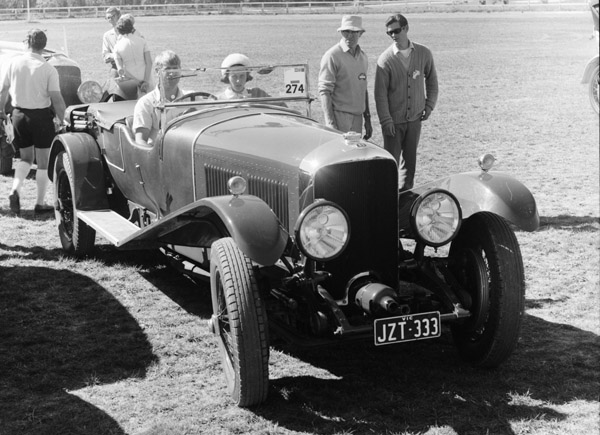Bentleys came to be regarded as the archetypal vintage sports cars following their many successes at Le Mans. Introduced in 1929 the 6.5-litre six-cylinder model was designed to give the marque a more prestigious, quieter performance model. On the 6.5-litre and the later 8-litre models the camshaft was driven by a system of coupling rods which were quieter than the shaft. In all other cars Bentley kept to the single overhead-camshaft layout until the time of his unsuccessful 4-litre model of 1931, by which point his company was on the verge of collapse and sale to Rolls-Royce.
The 120 km/h Bentley from 1919 was considered a fast tourer rather than a sports car. Yet its series of victories at Le Mans in 1924 and 1927-30 placed it firmly in the ranks of the best competition machinery. In fact, the distinction between fast tourer and sports car was somewhat blurred. The leading sports car races of the day, such as Le Mans and the Belgian 24 Hours, required all cars over 1100 cc in capacity to have four seats. Thus, since most manufacturers entered these events, their sporting cars were four-seaters.
There was a general trend in the 1920s towards overhead valves, in the interests of better engine breathing and more efficient use of fuel. Three types of overhead-valve engines existed: the pushrod type with a single side-mounted camshaft, which operated the valves via pushrods and rockers, and the types with single and twin overhead camshafts. A variation on these was the Riley Nine, introduced in 1926. It used two camshafts mounted high in the block, but not over the valves. So many sports cars used pushrod overhead valves that it is impossible to name them all.
The overhead camshaft, driven by either a vertical shaft or a chain, had been pioneered in 1905 by Isotta-Fraschini’s designer Giustino Cattaneo, and was used on all their models from then onward. Porsche had put it on the Prinz Heinrich Austro-Daimler and it was also chosen by W.O. Bentley, when he brought out a car under his own name in 1919.
W.O. Bentley was always insistent that his cars should be extremely reliable and built strongly. The six had two spark plugs to each cylinder and two magnetos to supply them. This twin ignition design was incorporated solely to give the Speed Six extreme reliability on the road. The fact that it improved racing performance was just an extra benefit. There are still Speed Sixes running today which is further proof of their reliability.










